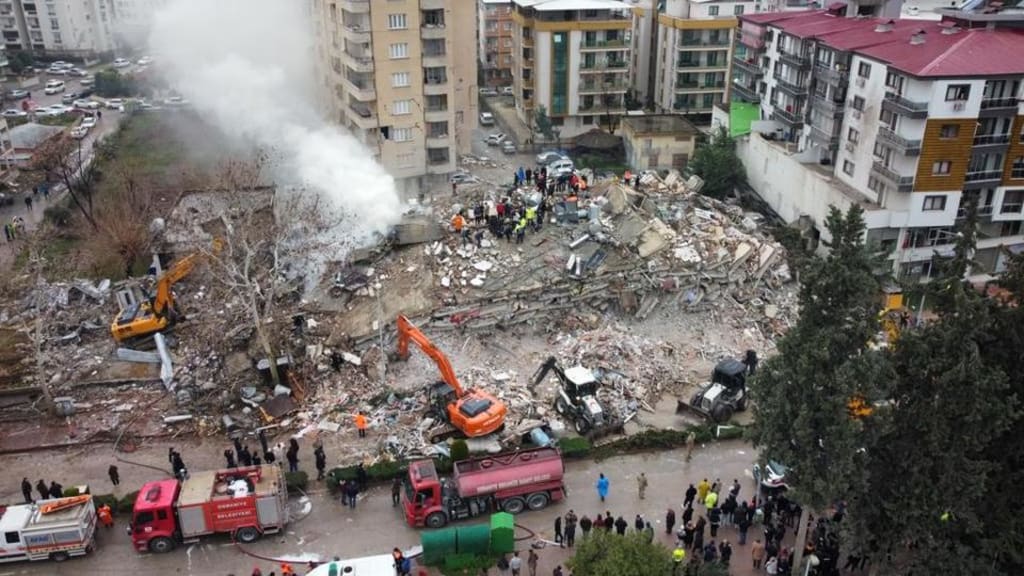Understanding Earthquakes: Causes, Effects, and Safety Measures
An Overview of One of the Most Destructive Natural Disasters in the World

Earthquakes are one of the most powerful and destructive natural disasters in the world. These sudden and often violent movements of the earth's surface can cause widespread damage, injuries, and even loss of life. As a result, it's important to understand what causes earthquakes, their effects, and what safety measures can be taken to minimize their impact.
Causes of Earthquakes
Earthquakes are caused by the movement of tectonic plates. These massive slabs of rock make up the earth's surface and are constantly shifting and moving due to the forces of the earth's mantle. When two tectonic plates collide or slide past one another, the resulting friction can cause a buildup of pressure. When this pressure is released suddenly, it results in an earthquake.
Effects of Earthquakes
The effects of earthquakes can be devastating. Depending on the magnitude and location of the earthquake, it can cause anything from minor tremors to complete destruction. Some of the common effects of earthquakes include:
Structural Damage: Earthquakes can cause significant damage to buildings, roads, and other infrastructure. In some cases, entire communities can be destroyed.
Landslides and Tsunamis: Earthquakes can trigger landslides and tsunamis, which can cause even more damage and loss of life.
Power Outages: Earthquakes can disrupt power grids, leaving entire cities without electricity.
Gas and Water Leaks: Earthquakes can also cause gas and water leaks, which can lead to fires and other hazards.
Safety Measures
There are several safety measures that can be taken to minimize the impact of earthquakes. These include:
Building Design: Building codes should be designed to withstand seismic activity. This can include reinforcing structures with steel beams or other materials.
Emergency Preparedness: It's important to have an emergency preparedness plan in place in case of an earthquake. This can include stocking up on supplies such as food, water, and medical supplies.
Evacuation Plans: Evacuation plans should be developed for areas that are particularly susceptible to earthquakes. These plans should be communicated clearly to the public.
Education: Education is key when it comes to earthquake safety. People should be educated on what to do in the event of an earthquake, such as dropping to the ground, taking cover, and holding on to something sturdy.
While earthquakes cannot be predicted with complete accuracy, scientists and seismologists have developed methods for monitoring seismic activity and predicting the likelihood of earthquakes occurring in specific areas. One such method is the use of seismographs, which are instruments used to measure the vibrations and movements of the earth's surface. Seismographs can be used to detect even small tremors, which can help scientists to identify patterns and trends in seismic activity.
Another method of earthquake monitoring is the use of GPS technology. By tracking the movements of tectonic plates with GPS, scientists can predict the likelihood of an earthquake occurring in a specific area. This method is particularly useful in areas that are prone to frequent earthquakes, such as the Pacific Ring of Fire.
Despite these advancements in earthquake prediction and monitoring, it is still difficult to predict earthquakes with complete accuracy. As a result, it's important to be prepared for earthquakes by taking the necessary safety measures and having an emergency plan in place.
In conclusion, earthquakes are a powerful and destructive natural disaster that can have devastating effects on communities and infrastructure. While we cannot predict earthquakes with complete accuracy, we can take steps to minimize their impact by taking safety measures and being prepared. By understanding the causes and effects of earthquakes, and by monitoring seismic activity, we can work towards reducing the risk of earthquakes and mitigating their effects.
Conclusion
Earthquakes are one of the most powerful and destructive natural disasters in the world. They can cause significant damage to infrastructure, disrupt power grids, and even lead to loss of life. Understanding what causes earthquakes, their effects, and what safety measures can be taken to minimize their impact is crucial. By taking these safety measures, we can help protect ourselves and our communities from the devastating effects of earthquakes.
About the Creator
Melih ÇEVİK
Hello, I'm Melih. I'm 20 years old. I am studying Industrial Engineering at Karadeniz Technical University. I also write blogs, articles and columns. I hope you enjoyed reading what I wrote. Have a nice day.
Enjoyed the story? Support the Creator.
Subscribe for free to receive all their stories in your feed. You could also pledge your support or give them a one-off tip, letting them know you appreciate their work.






Comments
There are no comments for this story
Be the first to respond and start the conversation.